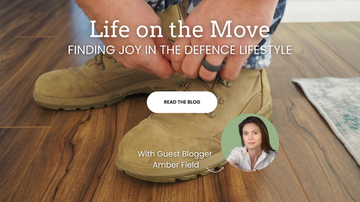TUFF Tradies Need A Good Exercise Regime!
TUFF tips has hand-picked a select group experts to help us live our best lives! The TUFF Team believe that being the best version of ourselves helps to support a great long-lasting connection and marriage.
Here is Tracee - Expert Naturopath on exercise and health
There are so many differing opinions and myths out there about exercise. What to do, when to do it, how long to do it for.
Join naturopath Tracee, as she helps to decode the jargon, separate fact from fiction and unlock the benefits of exercise for you!
Drink water before a work out
When getting up in the morning to exercise, a great habit to get into is having a big glass of water first thing. Something like 300-500ml.
This will help set you up for success both for your workout ahead and the rest of the day.
By flushing water through your digestive system you are stimulating a number of processes – essentially ‘waking’ the digestion up. This is great if you have a sluggish digestion, or if you feel and heaviness/bloating whilst you’re working out.
It may also help hydrate your body, which particularly benefits both your brain and your joints - meaning that you are more ready to get moving and feel more awake.
Considering most of us don’t drink nearly enough water every day, it’s a great way to get your daily water quota started!
Eating before a workout
My advice… eat something if you are hungry – but don’t force it!
If you are working out in the morning, and you are hungry, you only need a small snack and my top 3 faves are
- A small banana.
- A glass of juice (great for hydration too)
- A slice of toast/crumpet/couple of rice cakes
What you’re looking for is about 10-20g of carbs whilst avoiding a large bulk in your stomach.
If you’re working out in the afternoon, and you’re hungry, try to have a snack about 2-3 hours before you plan to work out.
The purpose of the food is to help maintain your energy for your workout so play around with what works for you. If you’re feeling really tired or fatigued then try a snack. And you might need to try a few different options before you find the right thing.
Preworkout
There are so many powders/drinks out there on the market that are promising you the world. And when you take them you might feel a bit ‘jacked’ up.
First – if you’re feeling tired and flat every time you work out and feel the need to take a preworkout – I would be assessing what’s going on for your health. It may be that you need a little snack (carbs) before you work out or maybe you need to work on your sleep.
So are preworkouts a complete waste of time? Actually no – there is good evidence for the benefit of caffeine (the main active ingredient in pre-workouts!). but I suggest you go straight to the source and drink coffee or tea (whichever your preference). The evidence suggest doses of 50-100mg of caffeine – or 1-2 shots of coffee.
IMPORTANT to note is that if you are caffeine sensitive, having any issues with your sleep, have issues with managing anxiety or if you are working out in the evening – please avoid using caffeine in this way
Post workout
Do you need to chug a big protein powder shake straight after every gym session?
Well, as always, it’s a bit of yes and no! Around 30-45 mins after you finish your workout is the best time to consume your next meal. But if you’re not planning to eat, then a shake/smoothie can be a great option.
What you are looking to consume is around 30-60g of carbs with a ratio of 4:1 carbs to protein in that meal/snack straight after eating.
It’s not the time to avoid carbs – by replenishing our stores, and in combination with the protein, we support effective muscle repair and regeneration, leaving us more able to go about our day with good energy and less sore muscles.
Morning/Evening – when is best
This is individual due to so many different factors. Included is the time we may have available, or when our chosen exercise is scheduled.
For high intensity workouts like running, gym classes etc – these are mostly best to be done in the morning. Lower intensity workouts are better for the night time.
The reasoning for this is that exercise (particularly HIIT) sets off a load of hormones/responses etc in the body, including the hormone cortisol. We want this to be at its highest in the morning and lowest in the evening (so our melatonin can then rise, helping us to sleep well)
For things like late netball games, or dance classes that go late, then I suggest that to minimise impact – ensure you have a good snack/small dinner 2-3 hours prior to exercise, a small light snack after and start your evening/bedtime routines as soon as you get home.
Exercise for mood
Many people tie exercise in with weight loss, or to ‘earn’ food/treats etc. Or to achieve or maintain a certain aesthetic.
But this is such an opportunity missed. Exercise is so much more and the benefits continue to be uncovered.
When it comes to the brain benefits, particularly a chemical in the brain called BDNF, exercise has been found to be one of the most potent things we can do/take/eat/be prescribed to increase this chemical.
And when we have plenty of BDNF? Essentially our brain works better – cells are healthier for longer and we can actually build new cells and pathways. Who doesn’t want to think clearer and have a better memory.
Exercise also helps to lower our stress hormones and reduce anxiety/low mood and it doesn’t need to be hours and hours at the gym or running marathons.
150mins of moderate intensity per week is what is suggested that we need to get these brain benefits. This can look like 0-25 minutes walk around the block daily, or a couple of 1 hour walk/chat catch ups with friends. The best benefits are found with a regular and ongoing habit of movement.
Helping FIFO Workers Get Physical!
For helpful advice from Tracee on all things health and wellness be sure to head to her website HERE or follow her on Instagram and Facebook!




